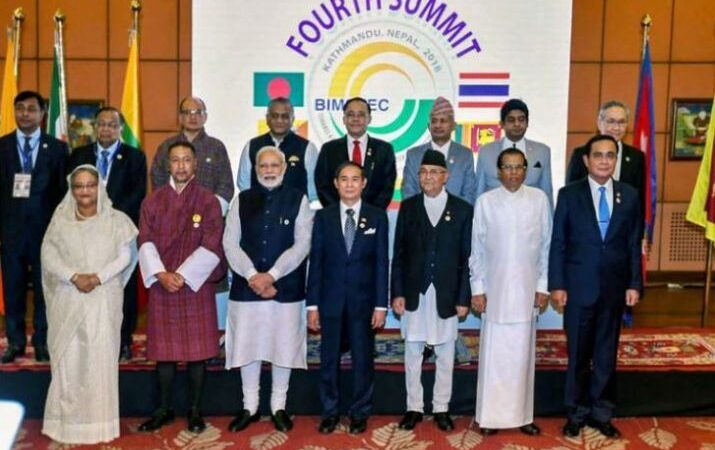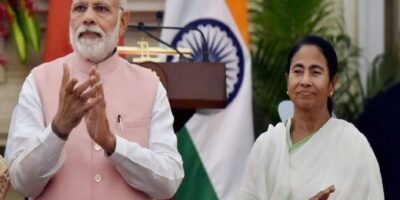Why Modi has welcomed BIMSTEC pioneers to his swearing-in service today

India has welcomed the pioneers of BIMSTEC (Bay of Bengal Initiative for Multi-Sectoral Technical and Economic Cooperation) nations for Prime Minister Narendra Modi’s swearing-in service Thursday.
Behind this welcome lies India’s reestablished concentration and developing impression in the Bay of Bengal district.
ThePrint takes a gander at the significance of BIMSTEC by diagramming the few frameworks and network ventures India is engaged with around the district.
What is BIMSTEC and for what reason is it significant for India?
BIMSTEC is a local association containing Bhutan, Nepal, Bangladesh, India, Myanmar, Sri Lanka, and Thailand. It was set up in 1997, however, was viably torpid until the Modi government looked to give it a recharged push after cross-outskirt psychological warfare from Pakistan tossed a cover over the South Asian Association for Regional Cooperation (SAARC).
From antiquated occasions till mid-twentieth century, the Bay of Bengal district was profoundly coordinated, its exchange ties thriving on the surplus agrarian yield involved by the ordinary downpour.
Nonetheless, the 1950s onwards, the nations of the district embraced distinctive political frameworks and sought after disparate unions, hindering exchange and cross-border development of individuals.
The Bay of Bengal area, therefore, got split between two particular alliances: South Asia, spoken to by SAARC, and Southeast Asia, took into account by ASEAN, the Association for Southeast Asian Nations.
At present, BIMSTEC nations’ intra-territorial exchange represents just 5 percent of their complete GDP, rather than 29 percent inside the ASEAN coalition. Physical availability, as well, is horrifying.
BIMSTEC does not just enable India to encourage availability crosswise over South Asia, yet in addition makes the chance to coordinate South Asia with Southeast Asia, a key purpose of the Modi organization’s Look East arrangement.
Utilizing its Belt and Road Initiative [BRI], China is presently a noticeable power in South Asia, testing a portion of India’s center key interests. By leading network extends in BIMSTEC nations, India is attempting to give an option in contrast to Chinese interests in the district.
India is engaged with a few rails, street, sea, and vitality extend in the BIMSTEC area.
These availability ventures are supported by a two-overlap thought: Facilitating network in eastern and northeastern India, and afterward further associating them to neighboring nations.
India’s eastern and northeastern undertakings
The upper east is viewed as India’s entryway to Southeast Asia, which is the reason availability in this locale is vital to the Look East Policy.
India is spending Rs 10,000 crore to construct a 1,000-km rail organize in the upper east, with designs to associate this to the nation’s eastern neighbors.
Another Rs 10,000 crore is being spent on encouraging force age in the upper east.
In eastern India, the East Coast Economic Corridor (ECEC) is being built with the assistance of the Asian Development Bank (ADB), which would be a multi-modular, local sea passage from Kolkata to Kanyakumari.
The ECEC will be supplemented by the advancement of four ports along the Bay of Bengal coast under the Sagarmala venture: Sagar Island (West Bengal), Paradip Outer Harbor (Odisha), and Sirkhazi and Enayam (Tamil Nadu).
A train interface among Bangladesh and North Bengal are being constructed, while one among Khulna and Kolkata was hailed off in 2017.
Rail and street ventures
As far as cross-outskirt street network, the two key activities India is engaged with are the India-Myanmar-Thailand Trilateral Highway and Kaladan Multi-Modal Transport Project.
The previous is a 3,200-km parkway, associating Moreh in Manipur to Mae Sot in Thailand, going through huge pieces of Myanmar. The thought is to use Myanmar’s area and transform it into a land connect between India and Southeast Asia.
The Kaladan Multi-Modal Transport (KMMT) Project looks to interface Sittwe in Myanmar to Mizoram in India, and has four parts: A delivery travel among Kolkata and Sittwe, inland water transport associating Sittwe and Paletwa in Myanmar through River Kaladan, a street interfacing Paletwa to the Indo-Myanmar outskirt, and another street associating Lawngtlai in Mizoram to the Indo-Myanmar fringe.
Other than these two key undertakings, India is helping construct three passages through SAARC nations and two Asian expressways.
India has officially finished up a Motor Vehicles Agreement with Bangladesh, Bhutan, and Nepal, which enables individual and business vehicles to cross outskirts with least allows, while exchanges for a comparable BIMSTEC system are additionally in progress.
In the event that the understanding is achieved, it would permit vehicle development overall BIMSTEC nations with only a solitary grant, which would be accessible on the web.
Oceanic network
To encourage oceanic network, India is helping manufacture a Chittagong-Kolkata-Colombo passage, other than being associated with the development of an exchange course interfacing Bakugan Land Port in Bangladesh to Gayleyphung in Bhutan through India.
There are two or three undertakings India is creating with Japanese cooperation, incorporating the Trincomalee Port in eastern Sri Lanka and Dawei Port that is a piece of a joint Myanmar-Thailand venture.
In spite of the fact that it is still at a proposition arrange, the most driven sea network venture including India is the Mekong-India Industrial Corridor (MIIC), which looks to build up a few ports interfacing Vietnam to Chennai through Cambodia, Thailand, and Myanmar. The arrangement is to in the end connect MIIC to the trilateral parkway and the proposed Chennai-Bengaluru Industrial Corridor.
Inland conduits and air
The Modi government is progressing in the direction of growing direct air availability between Dhaka, Chennai, and Colombo, covering the whole western Bay of Bengal coast.
The Waterways Authority of India, attempting to make 106 streams safe, is firmly organizing with Myanmar and Bangladesh to encourage water availability through River Barack in Bangladesh and River Irrawaddy in Myanmar.
Digital
India is as of now laying optic filaments from Bhutan to Bangladesh by means of the upper east. Also, India has broadened a $1 billion credit extension to lay a rapid optic-fiber arrange in the remote regions of Cambodia, Laos, Vietnam, and Malaysia.
Energy
The BIMSTEC area contains creating states, which have critical vitality requests, and India and its privately owned businesses are attempting to address them.
For example, in Bangladesh, India is taking a shot at gas frameworks and providing fast diesel through pipelines. In Sri Lanka, it is building the Trincomalee oil stockpiling tank homestead and setting up an LNG terminal and a 500-megawatt LNG-terminated power plant close Colombo.
Peruse Global Pulse for a sampler of the enormous worldwide stories, and why they matter




Comments are Closed